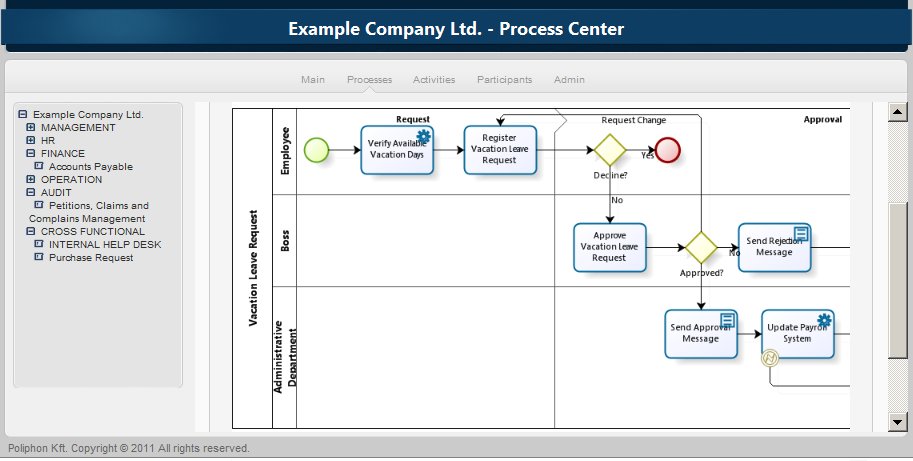Business documents like contracts or invoices have always been and will always be an essential part of business. Most business processes involve some sort of document handling like processing incoming letters or generating documents to be sent out to business partners.
In spite of this close relationship, pure-play Business Process Management systems traditionally take a completely generic process-oriented view, focusing mainly on process design, implementation and monitoring; the management of documents ‐ even if they are closely related to processes – is viewed as an external field.
Most large companies already have some DMS solution, maybe a simple network shared drive or a complex, specialized system. The general expectation is that documents should be uniformly available in all areas of their business without people having to use any special application other than the one they use for their daily work. Although this simple requirement is rarely met, companies have invested so much into their existing solution that they are reluctant to replace it, therefore it must be integrated into their processes.
Integrating DMS solutions of all sorts into a BPM system is not a trivial challenge. In order to simplify the task,we decided to break down the document management problem into well defined areas and implement these separately as replaceable and re-usable modules.

The lowest level module is the storage where the physical document files are stored. This is the area where most companies already have some solution.
The next layer is something we call meta database. This stores all descriptive information that we have about our documents. If we have millions of documents, well-designed indexes are indispensible. This area is typically much less covered at most companies.
If we want to make documents available throughout the organization, we need to implement document management as a well defined and tightly controlled service. This is what the next layer does. This service-based approach to document management is still very rare.
The top layer is probably the most interesting one, as this is what users actually see during their daily work. It must be seamlessly integrated into the screens of the business process in order to ensure smooth operation. The DMS Framework includes a set of elementary screen components that can be combined to build process-integrated document management screens that meet all local business requirements.
Poliphon's DMS Framework is essentially a reusable toolkit, which can be a fully functional DMS solution on its own, but its main strength lies in the capability of filling the gaps that a company’s existing document management solution left open.
The aim of a Business Process Repository is to provide an insight into the operation of a complex organization through a centralized library of its process models. The common repository enables the members of the organization to share their business knowledge and to keep the process models up-to-date.
Our XML-based process repository solution provides an integrated and unified view of all business processes and subprocesses, their relationships and dependencies regardless of the BPM solution and process representation selected by the organization.
Current document management solutions usually provide rigid user interfaces that are difficult to integrate or customize. Responding to our customers’ requirements for flexible and easy-to-integrate user interface solutions, we decided that instead of hard-coded, pre-defined screens we build a set of elementary user interface components that can be easily integrated into existing screens, and can also be reused to quickly build new ones.

Mobile BPM for most companies is not about shiny new gadgets and fancy applications but a bare business necessity that requiress a simple and efficient solution. Who needs mobile BPM? What is it good for? Everybody needs it, whose job is not desk bound but it is still part of a larger business process. A manager for example who - amongst many other things - has the duty of signing off large value invoices cannot sit at his desk all day just to give his approval. He should be able to do this away from the office between two important meetings. Transport and logictic workers, mobile engineers, traveling agents and inspectors are inherently mobile. How do we take them to the BPM system? Processes can’t wait until they have time to come into the office and do some clicking on a PC. If we don’t want our processes to wait for them, we need to take BPM to them. They must be able to actively participate in a process there and then regardless of where they are at the moment.
Most of these people already use a mobile device of some sort. It can be smartphone, a PDA integrated with a barcode scanner or an RFID reader, a laptop or nowadays a tablet. Ideally, the BPM soultion should run on their existing device to avoid the problems of having multiple mobile devices and save the cost of replacing the existing ones. The typical challenges are the small display size, many different mobile devices, discontinuous work, frequent interruptions, relatively low bandwidth and unreliable connections.
Mobile worker's participation in a business process usually boils down to receiving a notification, adding some information and/or making some decisions. In some special cases they also need to move files, which can make things a bit more complicated. Poliphon's approach to mobile BPM focuses on these areas. We help our customers to choose and implement the solution that most efficiently meets their requirements.








